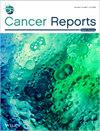Association Between Triglyceride-Glucose Index and Breast Cancer: A Systematic Review and Meta-Analysis
Abstract
Background and Aims
The triglyceride-glucose (TyG) index, a surrogate marker for insulin resistance and metabolic syndrome, has been implicated in breast cancer (BC) risk. However, its predictive value remains controversial. This systematic review and meta-analysis assessed the association between the TyG index and BC risk, its role in differentiating malignant from benign breast lesions, and its potential prognostic significance.
Methods
A comprehensive search of PubMed, Scopus, Web of Science, Embase, and Google Scholar was conducted up to January 2025. Studies were included if they met the following criteria: (1) assessed the TyG index about BC risk, progression, or prognosis; (2) included a comparator group (healthy individuals, benign breast lesion patients, or internal controls); (3) reported effect sizes (odds ratio [OR] or hazard ratio [HR]) with 95% confidence intervals (CI); and (4) provided sufficient statistical data on the TyG index. Excluded studies included in vitro or animal research, reviews, case reports, and those lacking relevant quantitative data. Effect sizes were pooled using a random-effects model; heterogeneity was assessed via I2 statistics, and sensitivity analyses were performed. A restricted cubic spline model evaluated dose–response relationships.
Results
Thirteen studies, including retrospective, case–control, cohort, and cross-sectional designs, were analyzed. Case–control and cross-sectional studies revealed a significant association between a higher TyG index and increased BC risk (OR: 1.87, 95% CI: 1.45–2.41, p < 0.01). However, cohort studies did not confirm this relationship (HR: 1.04, 95% CI: 0.97–1.11, p = 0.23). The TyG index effectively differentiated malignant from benign breast lesions (WMD: 0.23, 95% CI: 0.18–0.27, p < 0.01) with a pooled AUC of 0.64. Dose–response analysis suggested a non-linear relationship between the TyG index and BC risk (p < 0.001).
Conclusion
While the TyG index may not strongly predict BC onset, it reflects metabolic alterations linked to cancer progression. Its ability to distinguish benign from malignant lesions highlights its clinical utility. Future studies should standardize TyG index thresholds and validate their prognostic value through longitudinal research.
Trial Registration
PROSPERO: CRD42024547997


 求助内容:
求助内容: 应助结果提醒方式:
应助结果提醒方式:


